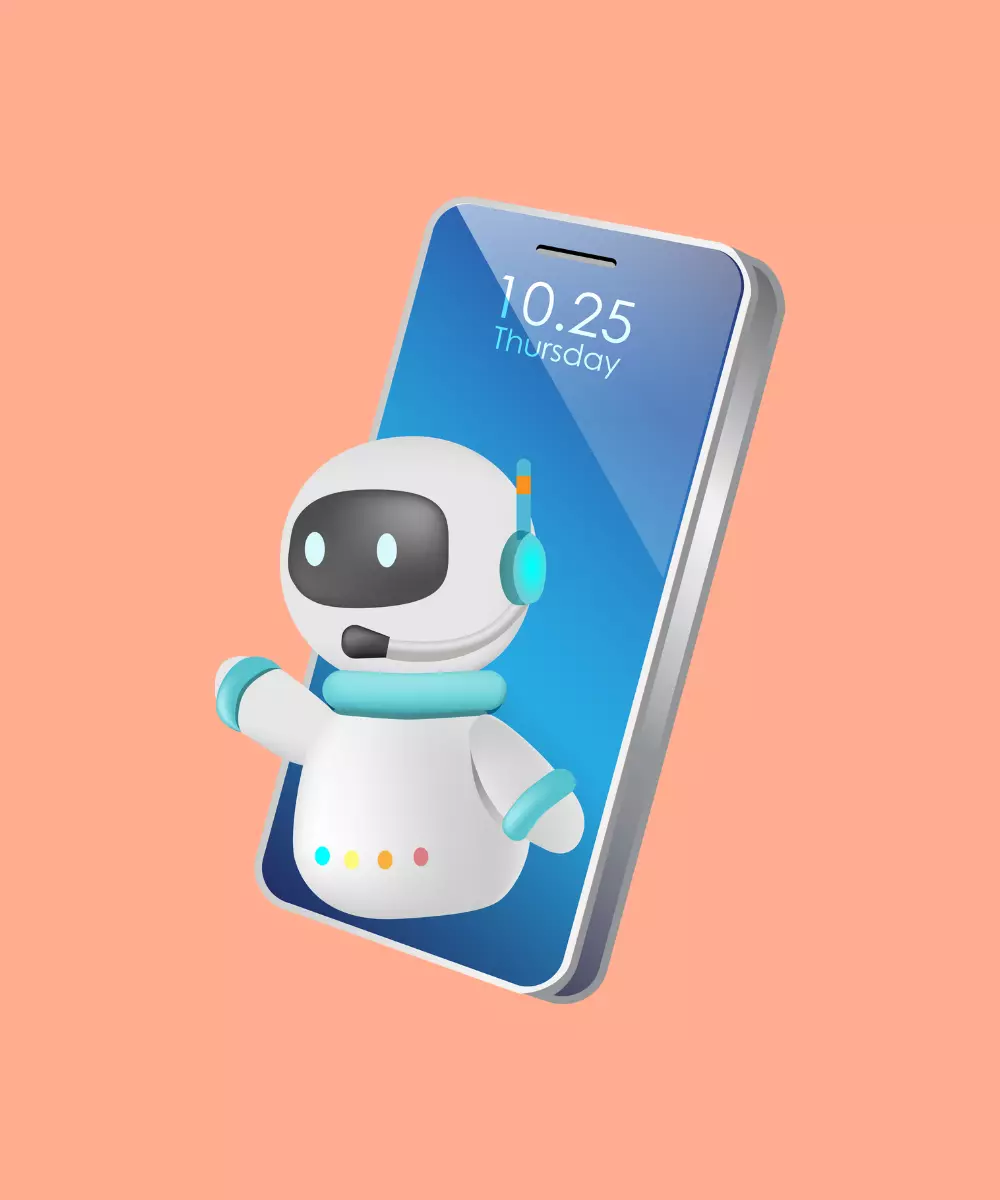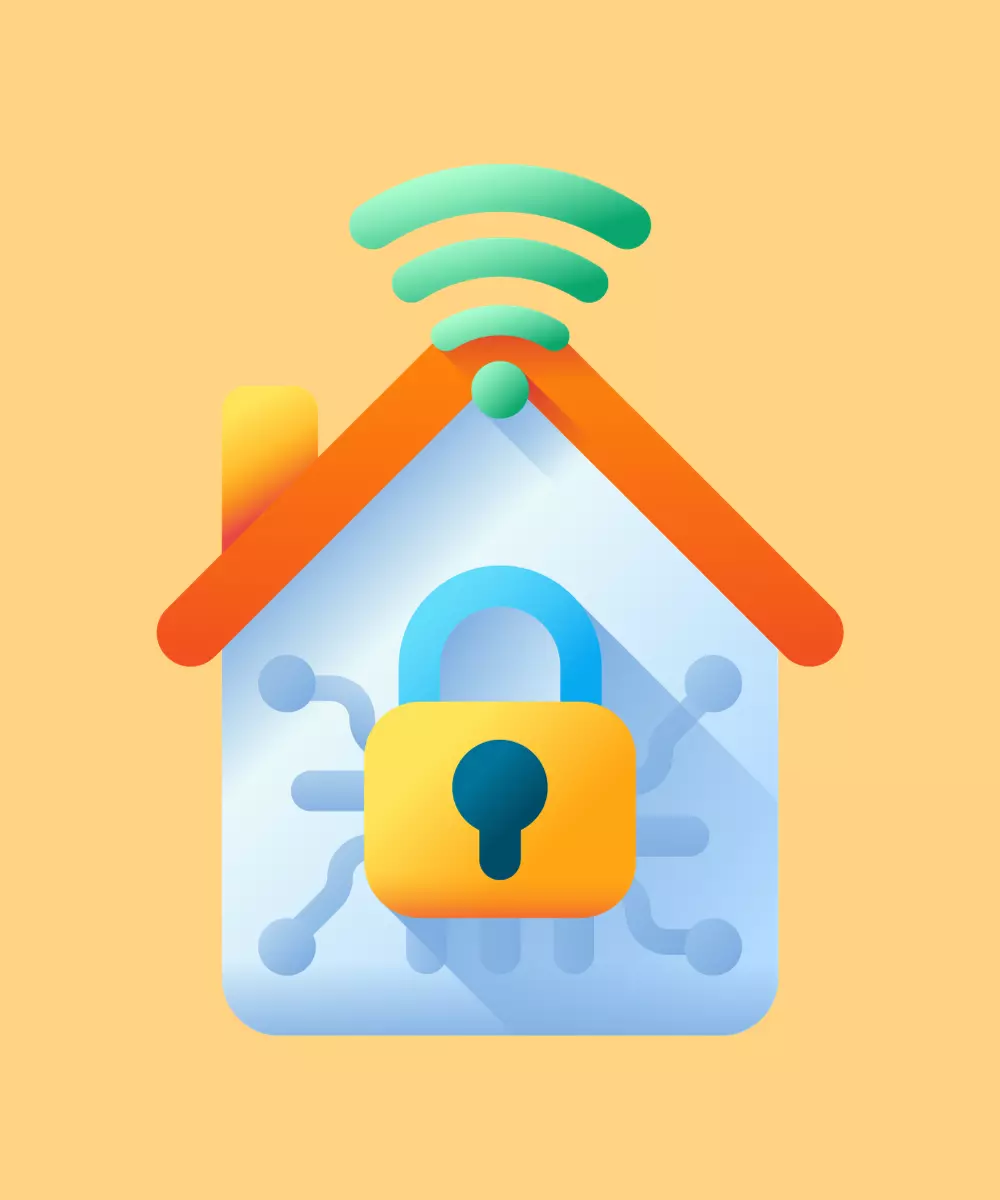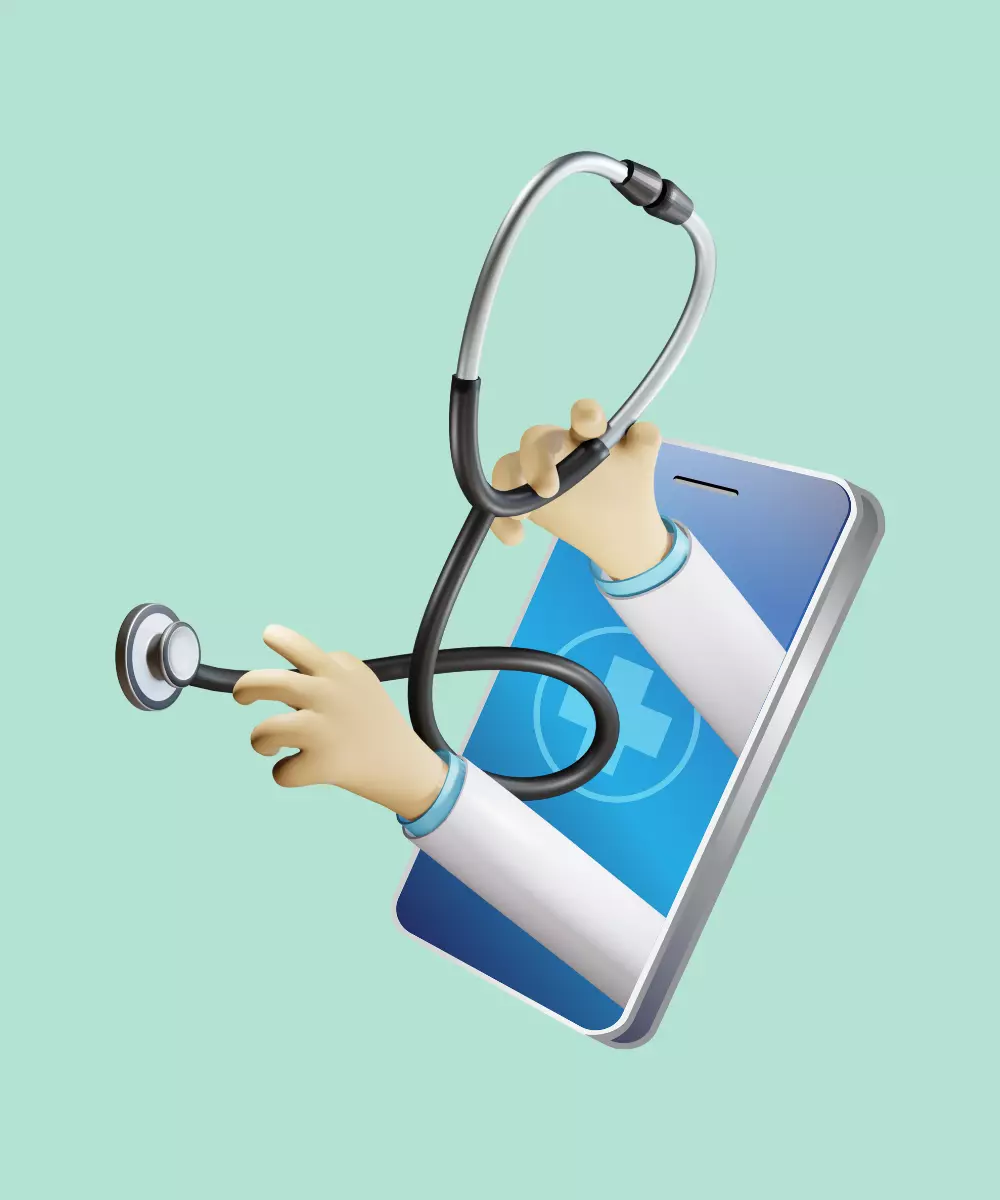Telemedicine apps have transformed the healthcare landscape, breaking down physical barriers and making medical services more accessible than ever. This shift, accelerated by recent global events, has led to a surge in demand and innovation in the telemedicine sector. With the market size exceeding USD 45 billion in 2020 and projected to grow exponentially, these apps are not just a convenience but a necessity in modern healthcare. They integrate cutting-edge technologies like AI, IoT, and Blockchain, enhancing patient care and data security. This article explores the world of telemedicine app development, covering its types, features, benefits, challenges, and future prospects, providing comprehensive insights into this dynamic and vital field.
Understanding Telemedicine Apps
Telemedicine apps represent a significant breakthrough in the way healthcare services are delivered. They offer a digital platform where patients can receive medical care remotely, using their smartphones or computers. This section explores the various types of telemedicine apps and their key features, providing a deeper understanding of their functionality and scope.
Types of telemedicine apps
- Diagnostic apps: These apps enable healthcare professionals to diagnose patients remotely. They often incorporate tools for analyzing symptoms, medical imaging, and sometimes, integrate with diagnostic devices. For example, Ada - a health companion app - helps patients understand their symptoms and guides them towards appropriate care.
- Monitoring apps: Particularly vital for chronic condition management, these apps track vital signs and health metrics regularly. They can sync with wearable devices to monitor heart rate, blood sugar levels, and more, providing continuous health monitoring. MySugr, for instance, specializes in diabetes management, allowing users to log blood sugar levels and monitor their condition.
- Consultation apps: These platforms facilitate virtual consultations between patients and healthcare providers. They offer features like video calls, enabling face-to-face interactions akin to in-person visits. Platforms like Teladoc offer virtual consultations, enabling patients to speak with healthcare providers via video calls, making medical advice more accessible.
- Prescription apps: Streamlining the process of medication management, these apps allow doctors to send e-prescriptions directly to pharmacies, making it easier for patients to obtain their medications. An example is RxSaver, which helps patients find discount prescriptions and manage their medication schedules.
- Mental health apps: Focused on psychological well-being, these apps offer therapy sessions, stress management tools, and resources for mental health education. Apps like Talkspace provide access to therapy and counseling services through a mobile platform.

Key features of a successful telemedicine app
- Video conferencing: A core feature that allows real-time, face-to-face interactions between doctors and patients, making consultations more personal and effective.
- Chat functionality: Enables patients to send text messages, images, and files, facilitating easy communication with healthcare providers.
- Appointment scheduling: A user-friendly interface for scheduling, rescheduling, and canceling appointments, crucial for managing a patient's healthcare journey.
- Electronic health records (EHR): Securely stores patient data, including medical history, test results, and treatment plans, ensuring that information is readily available for both patients and doctors.
- Prescription management: Automates the prescription process, from creation to fulfillment, and can include features for medication reminders and tracking.
- Payment gateway integration: Simplifies the billing process, allowing patients to pay for consultations and services within the app.
- Push notifications: Keeps patients engaged and informed about upcoming appointments, medication schedules, and important health updates.
Benefits of Telemedicine Apps
Telemedicine apps have revolutionized the way healthcare is delivered, offering a multitude of benefits to both patients and healthcare providers. The convenience and efficiency they bring to the healthcare industry are transformative. This section highlights the specific advantages for different stakeholders.
For patients
- Increased accessibility: Patients in remote or underserved areas gain access to quality healthcare, overcoming geographical barriers.
- Convenience: Enables healthcare access from the comfort of home, saving time and eliminating the need for travel.
- Reduced costs: Cuts down on travel expenses and indirect costs associated with in-person visits, like taking time off work.
- Immediate care: Offers quick access to medical advice, essential in urgent but non-emergency situations.
- Privacy and comfort: Some patients are more comfortable discussing health issues in the privacy of their own space.
- Chronic disease management: Patients with chronic conditions can easily monitor and manage their health, improving long-term outcomes.
- Mental health support: Easier access to mental health services, vital for those who may face stigmatization or lack local resources.
For healthcare providers
- Efficiency in operations: Streamlines various processes like appointment scheduling, record-keeping, and follow-ups.
- Broader patient reach: Allows providers to extend their services beyond local boundaries, potentially increasing their patient base.
- Enhanced data management: Digital records and data analytics tools aid in better patient management and treatment planning.
- Cost-effectiveness: Reduces overhead costs associated with physical space and enables efficient resource allocation.
- Improved patient engagement: Digital platforms facilitate continuous patient engagement, enhancing patient-provider relationships.
- Flexibility in service delivery: Offers healthcare professionals flexibility in their working environment and hours.
- Interdisciplinary collaboration: Easier for different healthcare specialists to collaborate on patient care, improving treatment outcomes.
Essential Technologies in Telemedicine App Development
The development of telemedicine apps relies heavily on various advanced technologies. These technologies not only enhance the functionality of these apps but also ensure security, user-friendliness, and efficiency. Here's a detailed look at the key technologies integral to telemedicine app development.
Artificial Intelligence (AI) and Machine Learning (ML)
AI and ML play a crucial role in telemedicine apps. They aid in diagnosing diseases, predicting patient outcomes, personalizing treatment plans, and even in managing patient queries through AI-powered chatbots. For instance, AI algorithms can analyze medical images to assist in early disease detection.
AI algorithms are used in apps like Babylon Health to offer symptom checking and initial diagnosis. Additionally, Woebot, an AI-powered mental health chatbot, provides cognitive behavioral therapy techniques to users.

Internet of Things (IoT)
IoT technology in telemedicine allows various medical devices and sensors to connect and communicate. These devices can monitor vital signs like heart rate, blood pressure, and glucose levels in real-time, providing invaluable data for remote patient monitoring. Wearables and smart health monitors are classic examples of IoT in telemedicine.
Devices like the Fitbit and Apple Watch monitor vital signs and sync with telemedicine apps, enabling continuous health tracking and data collection for remote patient monitoring.

Blockchain
Blockchain technology ensures the security and integrity of medical data in telemedicine apps. It offers a decentralized way to store and manage health records, making them tamper-proof and easily verifiable. This is particularly crucial for maintaining patient confidentiality and trust.
MedRec, a blockchain-based system, offers secure, decentralized medical record management, ensuring patient data privacy and integrity.

Cloud computing
Cloud technology is essential for storing vast amounts of data generated by telemedicine apps. It offers scalability, flexibility, and accessibility, enabling both healthcare providers and patients to access medical records and other necessary information securely from anywhere.
Cloud platforms like Amazon Web Services (AWS) are used by telemedicine apps for scalable and secure data storage. Practo, a telemedicine app, leverages cloud computing for managing vast patient data efficiently.
Data analytics
Telemedicine apps utilize data analytics to process and interpret the vast amount of health data collected. This can lead to insights into patient health trends, effectiveness of treatments, and even predictive analytics for potential health risks.
Propeller Health uses data analytics to monitor asthma and COPD symptoms, helping patients manage their conditions more effectively through insights derived from their data.
Cybersecurity measures
With the increasing amount of sensitive data being handled, robust cybersecurity measures are crucial. This includes secure data transmission protocols, encryption, and adherence to health data regulations like HIPAA.
Telemedicine platforms like Epic Systems incorporate strong cybersecurity protocols to protect patient data, aligning with healthcare regulations.
5G Connectivity
The advent of 5G technology promises to significantly improve telemedicine services by offering faster, more reliable internet connections. This can enhance video consultation quality and enable more complex, real-time remote monitoring of patients.
Virtual Reality (VR) and Augmented Reality (AR)
In some advanced applications, VR and AR are being explored for their potential in telemedicine, such as in conducting remote surgeries or providing more immersive therapy sessions.
Apps like Amelia Virtual Care use VR for anxiety and phobia treatment, offering immersive therapeutic environments. Similarly, AR is being explored in apps for medical training and patient education.
Challenges in Telemedicine App Development
While telemedicine apps offer numerous benefits, their development is not without challenges. These hurdles range from technical complexities to legal and ethical considerations. Understanding and addressing these challenges is crucial for the successful deployment of telemedicine solutions.
- Integration with existing systems: Telemedicine apps must seamlessly integrate with existing healthcare IT systems like Electronic Health Records (EHR), billing software, and other clinical systems. This integration can be complex, requiring careful planning and execution to ensure compatibility and functionality.
- Scalability: As telemedicine apps potentially serve a large and varied user base, they must be scalable. This means the app should function efficiently as the number of users increases, without any loss in performance or service quality.
- Data security and privacy: Ensuring the security and confidentiality of patient data is paramount. Telemedicine apps must comply with healthcare regulations like HIPAA in the U.S., GDPR in Europe, and other regional data protection laws, which involves robust encryption methods and secure data handling practices.
- Regulatory compliance: Navigating the complex landscape of healthcare regulations and ensuring compliance is a significant challenge. Each country and region has its own set of laws and standards that must be adhered to.
- Reimbursement policies: The variance in reimbursement policies for telemedicine services across different regions and insurance providers can be a hurdle for both patients and providers, affecting the adoption and sustainability of telemedicine solutions.
- Legal and ethical issues: Addressing legal issues such as licensing for cross-border healthcare provision and ethical concerns like ensuring equitable access to telemedicine services is challenging.
- Technology adaptation among healthcare providers: Encouraging healthcare providers to adapt to new technologies and integrate them into their practice can be a slow process, requiring training and time.
- Language and cultural barriers: Developing apps that are culturally sensitive and support multiple languages to cater to a diverse patient population is another challenge that needs attention.
Step-by-Step Guide to Developing a Telemedicine App
Creating a telemedicine app involves critical considerations specific to the healthcare sector, such as ensuring compliance with medical regulations and focusing on user-centric design for ease of use by patients and healthcare providers. While the core development process aligns with general app development principles, special attention is required for integrating healthcare-specific functionalities like secure video conferencing, reliable data encryption, and seamless integration with existing healthcare IT systems.
For an in-depth understanding of the app development process, refer to our detailed guide, Mobile App Development Process: Full Guide, on our blog. This guide offers a comprehensive view of the steps involved in creating a robust mobile app, applicable to various types of app development, including telemedicine.
Monetization Strategies for Telemedicine Apps
Developing a successful monetization strategy for telemedicine apps involves balancing profitability with the ethical considerations inherent in healthcare. Here are some effective strategies that can be employed:
Subscription models
Charge users a recurring fee for access to the app’s features. This could be tiered based on different levels of service, such as basic access and premium options with additional features. For instance, Headspace offers different subscription tiers for its wellness services.
Pay-per-consultation
Implement a fee-for-service model where patients pay for each virtual consultation. This can be particularly appealing for users who prefer pay-as-you-go services. Amwell follows this approach, charging patients for each virtual visit.
In-app purchases
Offer additional in-app services, such as specialized medical advice, personalized health plans, or access to premium content like exclusive health tips and articles. For example, MyFitnessPal uses in-app purchases for personalized diet and exercise plans.
Advertising
Partner with health-related brands to display their advertisements within the app. However, it’s crucial to ensure that these ads are relevant, unobtrusive, and do not compromise the user experience or privacy. WebMD displays targeted health-related advertisements that are relevant to its user base.
Sponsorships and partnerships
Collaborate with healthcare organizations, pharmaceutical companies, or insurance providers. These partnerships can provide a steady revenue stream while also enhancing the app’s offerings. For example, Sharecare partners with various health entities to offer comprehensive health solutions.
Freemium model
Offer basic app functionalities for free, while charging for advanced features. This model can attract a broad user base, some of whom may be willing to pay for additional premium services. Zoom, though not a telemedicine app, successfully uses this model, offering free basic services with the option to upgrade for more features.
Data monetization
With proper consent and adherence to privacy laws, anonymized data collected through the app can be valuable for research purposes. Selling this data to research institutions or healthcare agencies can be a revenue stream. 23andMe sells genetic data for research, adhering to privacy laws and with explicit user consent.
Offering customized solutions to healthcare providers
Develop and sell customized versions of the app to healthcare providers or clinics, tailored to their specific operational needs. Epic Systems offers tailored IT solutions for healthcare organizations.
Integration with health insurance
Collaborating with insurance companies to include the app as part of health insurance plans can provide a revenue stream while also making the app more attractive to users. Calm has partnered with certain insurance providers to offer mental health services as part of health insurance packages.
Corporate wellness programs
Partner with businesses to include your app as part of their corporate wellness programs, offering it to employees as a health benefit. Fitbit offers group health solutions that are used by companies for their corporate wellness initiatives.
The Future of Telemedicine Apps
The future of telemedicine apps looks promising, with continuous advancements in technology and changing healthcare dynamics. Here’s an exploration of what lies ahead in this rapidly evolving sector:
- Integration with wearable technology: The growing popularity and sophistication of wearable devices will lead to more comprehensive health monitoring. Telemedicine apps will increasingly integrate data from wearables, providing real-time health insights and more personalized healthcare.
- Advancements in AI and Machine Learning: AI will play a more significant role in diagnostics, treatment planning, and patient management. Machine learning algorithms will evolve to predict health issues before they become critical, enabling preventative healthcare measures.
- Enhanced remote monitoring: Future telemedicine apps will offer more advanced remote monitoring capabilities. This will be particularly beneficial for managing chronic conditions, post-operative care, and elderly care, providing continuous support and intervention when necessary.
- Improved access to mental health services: With an increasing focus on mental health, telemedicine apps will become a primary tool for delivering mental health services, making it easier for individuals to seek help for psychological issues.
- Blockchain for enhanced security and privacy: Blockchain technology will be more widely used to secure patient data and manage electronic health records, ensuring privacy and enhancing trust in telemedicine services.
- 5G and improved connectivity: The rollout of 5G will enhance telemedicine app functionalities, enabling smoother video consultations, faster data transfer, and supporting more complex telemedical interventions like telesurgery.
- Customization and personalization: Future telemedicine apps will offer more personalized healthcare experiences, tailoring services to individual patient needs, preferences, and health histories.
- Global expansion and localization: Telemedicine apps will expand globally, adapting to different regions and languages, thus making healthcare accessible to a broader population.
- Regulatory evolution: Regulations governing telemedicine will continue to evolve, possibly leading to more standardized practices and broader acceptance and integration into mainstream healthcare systems.
- Interoperability with healthcare systems: There will be a greater emphasis on interoperability, ensuring that telemedicine apps work seamlessly with different healthcare systems and technologies.
- Virtual Reality (VR) and Augmented Reality (AR) in treatment: VR and AR will be used more extensively for treatments, medical training, and providing patients with more immersive healthcare experiences.
- Focus on user experience: With the rising competition, the focus will be on enhancing user experience, making apps more intuitive, engaging, and easier to navigate.
Cost of Telemedicine App Development

The cost of developing a telemedicine app can vary significantly based on the complexity of the app. Let's break down the cost analysis into three categories based on app complexity: basic, moderate, and advanced.
Basic telemedicine apps
- Features: These apps include fundamental features like simple user registration, basic video calling, and text messaging.
- Development time: Approximately 3-6 months.
- Cost estimate: The development cost for a basic telemedicine app can range from $20,000 to $40,000. This variance depends on factors like the choice of platform (iOS, Android, or both) and the geographic location of the development team.
Medium complexity telemedicine apps
- Features: In addition to basic features, these apps might include appointment scheduling, prescription management, basic EHR integration, and payment gateways.
- Development time: Roughly 6-12 months.
- Cost estimate: The cost for a moderately complex telemedicine app can range from $50,000 to $100,000. The increase in cost is due to the addition of more complex features and possibly a more sophisticated user interface.
Advanced telemedicine apps
- Features: Advanced apps incorporate features like AI diagnostics, integration with IoT devices, advanced data analytics, and high-end cybersecurity measures.
- Development time: Can exceed 12 months.
- Cost estimate: The development cost for advanced telemedicine apps can start from $100,000 and go upwards of $250,000 or more. The higher cost is attributed to the integration of cutting-edge technologies, higher security standards, and more complex functionalities.
It's important to note that these costs are indicative and can vary based on additional factors such as the app's design complexity, the development team's expertise, post-launch support and maintenance, and any specific customizations required.
Conclusion
The evolution of telemedicine apps marks a significant leap in healthcare, offering accessibility, efficiency, and advanced care. As technology continues to advance, these apps will play a pivotal role in shaping the future of medical services.
At What the Flutter, we specialize in crafting telemedicine apps that embody innovation and user-centric design. Our expertise in Flutter app development equips us to transform your vision into a reality, creating apps that stand out for their quality and functionality.
Ready to embark on your telemedicine app journey? Connect with us at What the Flutter. We’re here to guide you every step of the way, from concept to launch.













